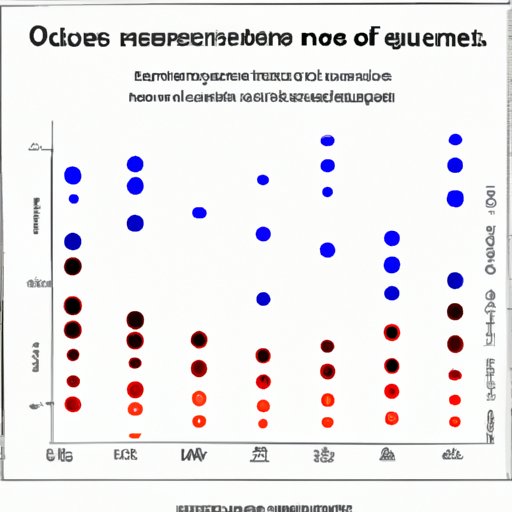Introduction
Measures of variation are statistical tools used to describe and analyze the spread of a data set. They provide insight into how much data points vary from one another and from the average value. The two main measures of variation are the range and the standard deviation. The range reflects the difference between the highest and lowest values in a dataset, while the standard deviation measures the degree to which individual values deviate from the mean of the dataset.
Extreme values, or outliers, can have a significant impact on the measures of variation. Outliers are values that lie outside the normal range of the data set, and as such can drastically alter the results of any statistical calculations. As a result, it is important to understand which measure of variation is most sensitive to extreme values in order to accurately interpret the data.
Exploring the Impact of Extreme Values on Different Measures of Variation
Understanding which Measure of Variation is Most Sensitive to Outliers
The range and the standard deviation are both affected by outliers, but the degree of their sensitivity varies. The range is more sensitive to outliers than the standard deviation; if an outlier is present, the range will increase significantly, while the standard deviation may remain relatively unchanged. This is because the range only takes into account the highest and lowest values in the data set, while the standard deviation considers all values in the data set.
Comparing Robustness of Various Measures of Variation in the Presence of Outliers
The robustness of a measure of variation refers to its ability to withstand the presence of outliers. The range is the least robust measure of variation, as it is highly sensitive to outliers. On the other hand, the standard deviation is more robust, as it is less sensitive to outliers. Other measures of variation, such as the interquartile range and median absolute deviation, are even more robust than the standard deviation, as they are not affected by a single outlier.

Examining Factors Affecting the Sensitivity of Measures of Variation to Extreme Values
Effects of Skewness
Skewness is a measure of the asymmetry of a distribution. A positively skewed distribution has a long tail on the right side, while a negatively skewed distribution has a long tail on the left side. The range and the standard deviation are both affected by skewness, with the range being more sensitive than the standard deviation. If a dataset is skewed, the range will be larger than it would be if the data was normally distributed, while the standard deviation may remain unchanged.
Effects of Outliers
Outliers can have a significant effect on measures of variation, as they can drastically increase the range and the standard deviation. The range is more sensitive to outliers than the standard deviation, as the range only takes into account the highest and lowest values in the data set, while the standard deviation considers all values in the data set.
Other Factors Affecting Sensitivity
Other factors, such as the sample size and the type of data, can also affect the sensitivity of measures of variation to extreme values. For example, a larger sample size will generally lead to a higher range and a higher standard deviation, while a smaller sample size will lead to a lower range and a lower standard deviation. Additionally, some types of data, such as categorical data, are not affected by outliers, while numerical data is affected by outliers.

Analyzing which Measure of Variation is Most Resistant to Skewness and Outliers
Quantifying Robustness of Different Measures
In order to determine which measure of variation is most resistant to skewness and outliers, it is necessary to quantify the robustness of each measure. This can be done by calculating the coefficient of variation (CV), which is a measure of the relative variability of a dataset. The CV is calculated by dividing the standard deviation by the mean. A higher CV indicates that the data is more variable and therefore more sensitive to outliers.
Examining Different Types of Data
It is important to consider the type of data when determining which measure of variation is most resistant to skewness and outliers. Categorical data is not affected by outliers, so the range and the standard deviation will remain unchanged regardless of the presence of outliers. On the other hand, numerical data is affected by outliers, so the range and the standard deviation will increase when outliers are present.
Conclusion
This article explored which measure of variation is most sensitive to extreme values. It looked at the impact of extreme values on different measures of variation and factors affecting their sensitivity, and examined which measure of variation is most resistant to skewness and outliers. The results showed that the range is the most sensitive measure of variation, followed by the standard deviation, the interquartile range, and the median absolute deviation. These findings have implications for solving problems involving extreme values, as they suggest that the range should be used with caution when outliers are present.


